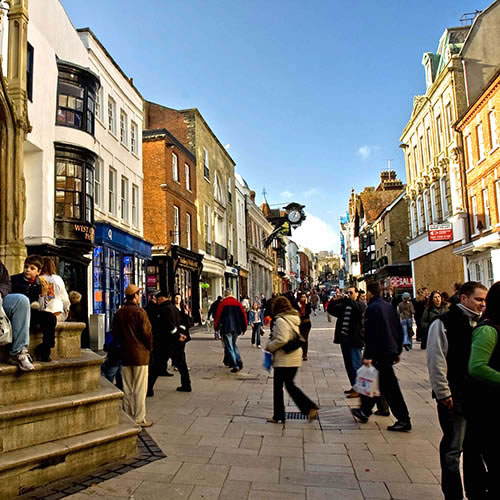The number of empty shops in the UK fell in April to its lowest level since December 2009 – 12.4 per cent.
The Local Data Company (LCD) found that the vacancy rate dropped 0.6 per cent in April compared with the same period last year. The decrease was driven by a drop in the number of units becoming vacant, which was down 16 per cent compared with April 2015, as well as an above average number of units being removed from the overall stock, up 76 per cent on the previous year.
Compared with March, shop vacancy rates decreased by 0.1 per cent compared with March to stand at 11.2 per cent.
In shopping centres, vacancy rate fell 1.4 per cent in April to 13.2 per cent, compared with April 2015. The North-East and Scotland saw the biggest falls in vacancy across the UK, at 2.8 per cent and 2.3 per cent respectively. Wales was the only region to see an increase in its vacancy rate, up two per cent in the past 12 months to April.
Retail park vacancy in the North-East and West Midlands saw an improvement, down 3.3 per cent and 3.5 per cent respectively in the past 12 months. The biggest improvement was in the East Midlands, which saw a drop of 2.1 per cent in the last 12 months. Scotland was the only region to see things get worse, with the vacancy rate rising from 7.6 per cent in April 2015 to eight per cent in April 2016.
The town-centre vacancy rate dropped for the first time in three months. Compared with a year ago, the vacancy rate decreased by 0.5 per cent from 11.2 per cent in April 2015. Scotland was the only region to see an increase, up 0.8 per cent in the last 12 months. This is the second consecutive month that Scotland has been the only region to see an increase.
Persistent vacancy – the number of units vacant for longer than three years – decreased in April compared with the previous month. The number of units vacant for over three years across the UK fell to 11,839 units. This is also down 2.8 per cent from the start of the year.
The North of England continued to have the highest percentage of total persistent vacancy. In the North-East it stood at 7.4 per cent, while the North-West saw the figure was 6.8 per cent, which compared with the national average of 4.4 per cent.
Matthew Hopkinson, director at LDC said: “This drop in the national vacancy rate to a level that was last seen in 2009 is significant. Of the shops we have, more are occupied than ever before and remaining occupied for longer, but the LDC data shows the removal of units from the overall stock, which is reflected by the decline in long-term vacant units. This is also good news, as it hopefully shows that landlords and local authorities are recognising that a unit that hasn’t been occupied for more than three years is very unlikely ever to be reoccupied and therefore should be demolished or given an alternative use. With nearly 12,000 shops in this category, there is still a long way to go and the impact on those areas blighted with such terminal vacancy would be significant. If in doubt, then take a visit to Skelmersdale, Walkden (near Manchester), Milford Haven, West Bromwich or Hartlepool to see for yourself.
“Recent results from retailers and profit warnings or downgrades from retailers show that this positive news might not be long-lived but, up to this date, the story for many retailers is one of expansion. However, we don’t know for how long and it’s not happening everywhere. 2016 could see further dramatic news, such as we have seen with the administrations of BHS and Austin Reed.”


